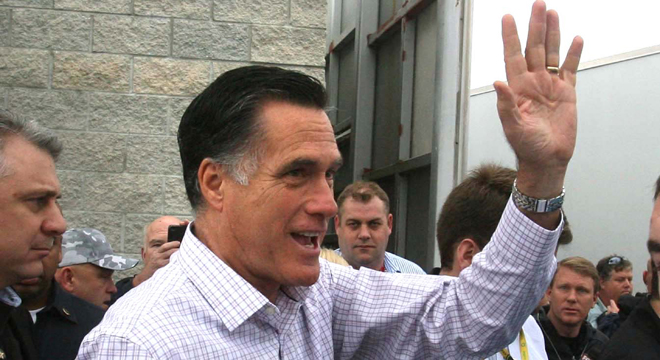Democrats and Republicans alike have tried to portray Mitt Romney as a “flip-flopper” who changes his positions on crucial issues over time. But in 2012, Romney’s inoculated himself against these charges with a more nuanced tactic: taking positions that are so vague as to be adaptable to any situation.
The most recent example is Medicare, where the Romney campaign released a heavily misleading memo on Monday that, in addition to other odd claims, simultaneously called out the White House for not reducing Medicare spending then attacked them for doing exactly that in the very same paragraph.
In fact, Romney has been attacking President Obama from both sides on Medicare funding for months. And while it’s a clear contradiction, there’s no decisive way to evaluate just which side of the issue he’s on thanks to a vague proposal that withholds key details. Romney has suggested replacing Medicare with a voucher system in which seniors are allowed to choose between private insurance and a competing public plan and then receive federal help to pay for the coverage. But unlike the House GOP’s budget — the so-called Ryan Plan — Romney has declined to offer any specifics on how big those subsidies would be.
The Romney camp declined to provide any solid numbers when asked by TPM; a spokeswoman instead quoted a Romney speech from this month in which he said companies would “compete to offer insurance coverage at the lowest possible price. Seniors will then receive government support to ensure they can afford that coverage.”
The result of this ambiguity? Romney has wide leverage to tailor his message according to what’s politically convenient. Ask Romney whether Americans should be worried about cuts to their benefits in senior-heavy Florida, and he responds: “We will never go after Medicare or Social Security. We will protect those programs.” Ask him at a gathering of spending-slashing enthusiasts like CPAC, and he insists he will “slow the growth rate in benefits for higher-income retirees” and that “we can’t afford to avoid these entitlement challenges any longer.” Given Romney’s broad pledges to dramatically reduce overall spending while increasing the military budget and lowering taxes, major cuts to Medicare would almost certainly be required. But he has an easy out as long as he refrains from giving any more information.
The same goes for Romney’s tax plan, where he has pledged to reduce tax rates across the board by 20 percent by cutting tax breaks that favor the wealthy and reducing overall spending. Which tax expenditures and spending programs would be cut? Not clear. Which current breaks for middle- and working-class Americans are off limits? Also not clear.
The result, once again: Romney can brush off any attacks on his plan as uninformed. And he did just that this month when pressed over an independent analysis that his tax breaks would add to the deficit and likely require tax increases on some low-income Americans.
“I think it’s interesting for the groups to try and score it because it can’t be scored because those kind of details have to be worked out with Congress and we have a wide array of options,” Romney said.
In the case of Romney’s Medicare and tax proposals, he’s being judged against a hypothetical policy change. But in the case of his confusing position on the auto bailout, he has to explain actual results — a thriving Detroit that he warned would be devastated if it received federal cash.
Romney offered up an extremely nuanced take while campaigning in Michigan last month, insisting that a Romney White House would have rescued the auto industry, even if it meant some federal help to make sure they survived bankruptcy. But because he’s declined to get specific as to how far this help would have gone — especially on the question of the most important element of Obama’s bankruptcy solution, direct loans to companies — he can simultaneously tell conservatives he opposes bailouts and tell Michigan auto workers that he would never have stood idly by while Detroit went under. Yet again, it’s virtually impossible to tell what he would have actually done given his public statements, which are filled with so many qualifiers, caveats and outs that they could be twisted to appeal to almost any audience.
Taken together, all three proposals follow a clear pattern. Step one: Take a popular conservative idea (Medicare vouchers, tax cuts, bankruptcy for failing companies). Step two: Leave out a critical piece of information (subsidy levels, spending cuts, federal aid). Step three: Emphasize whichever step works best with the audience in question.









